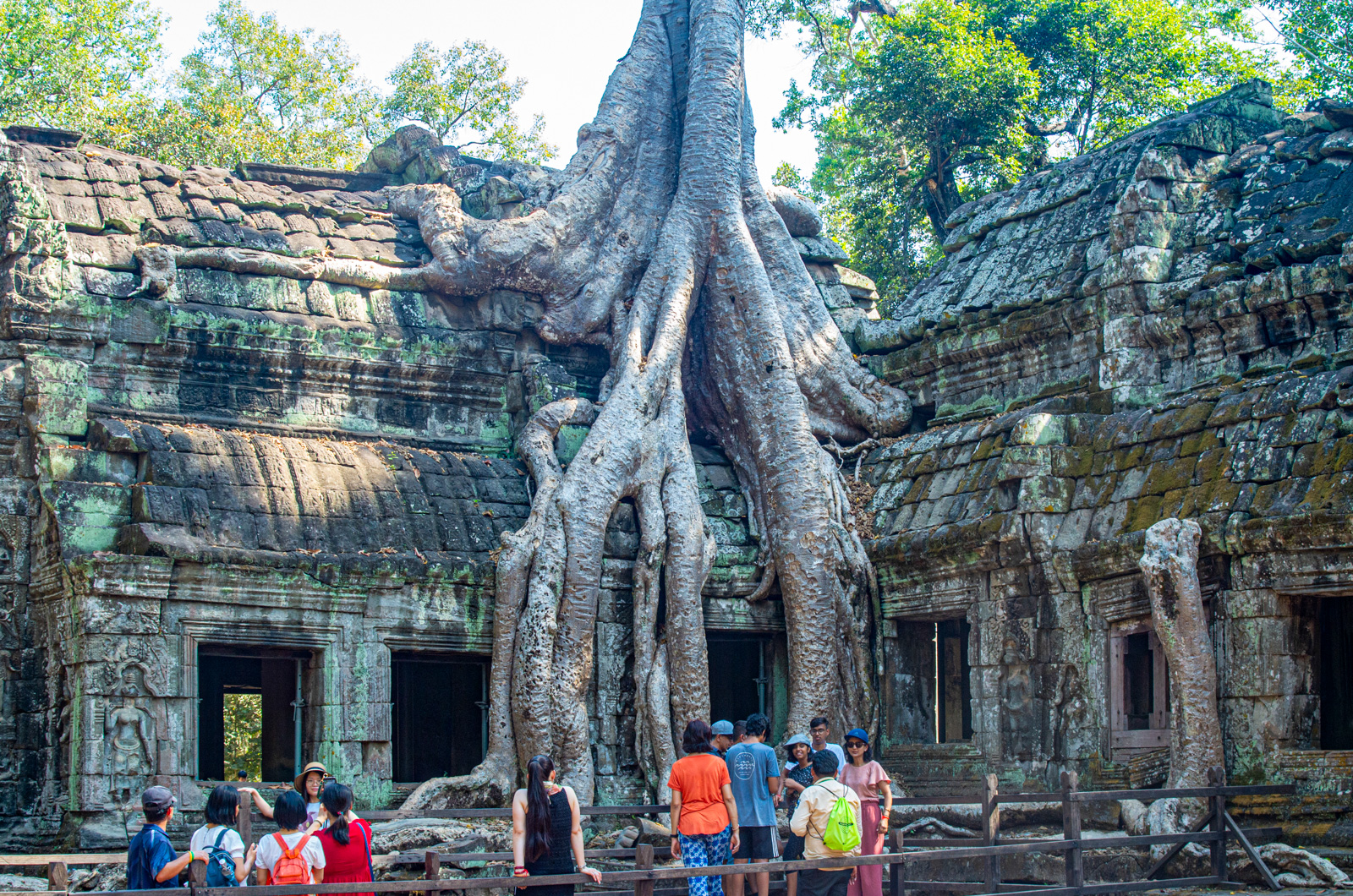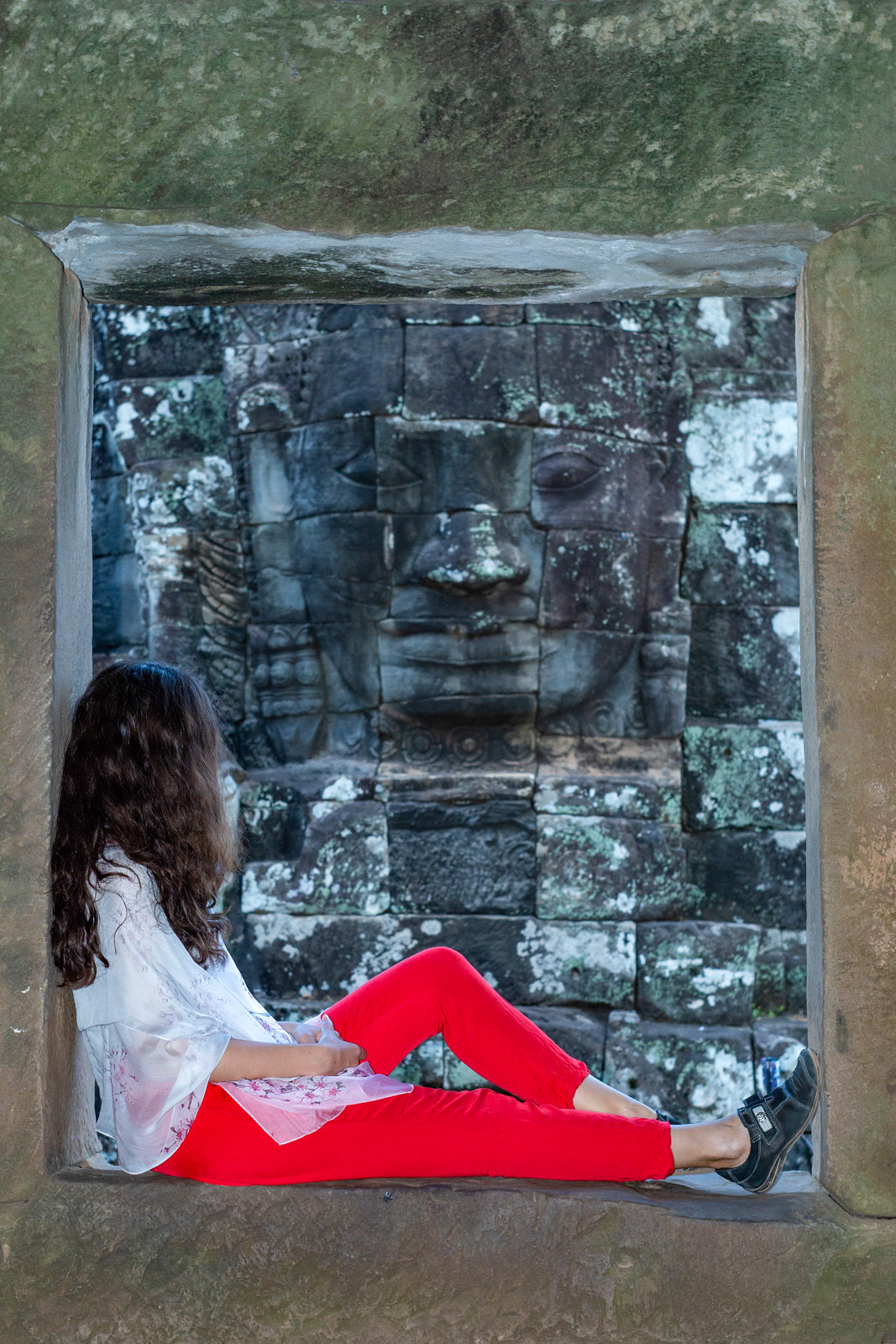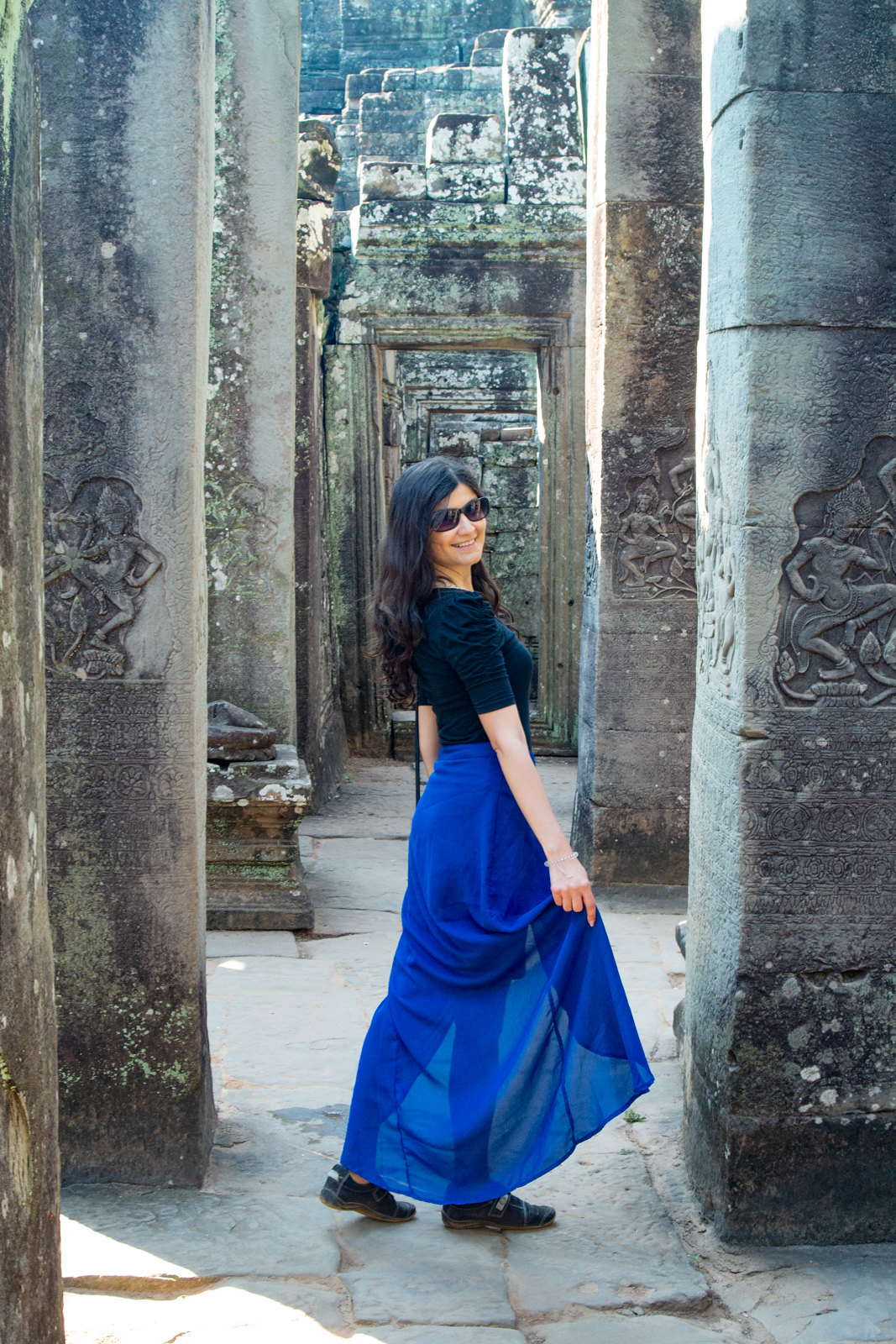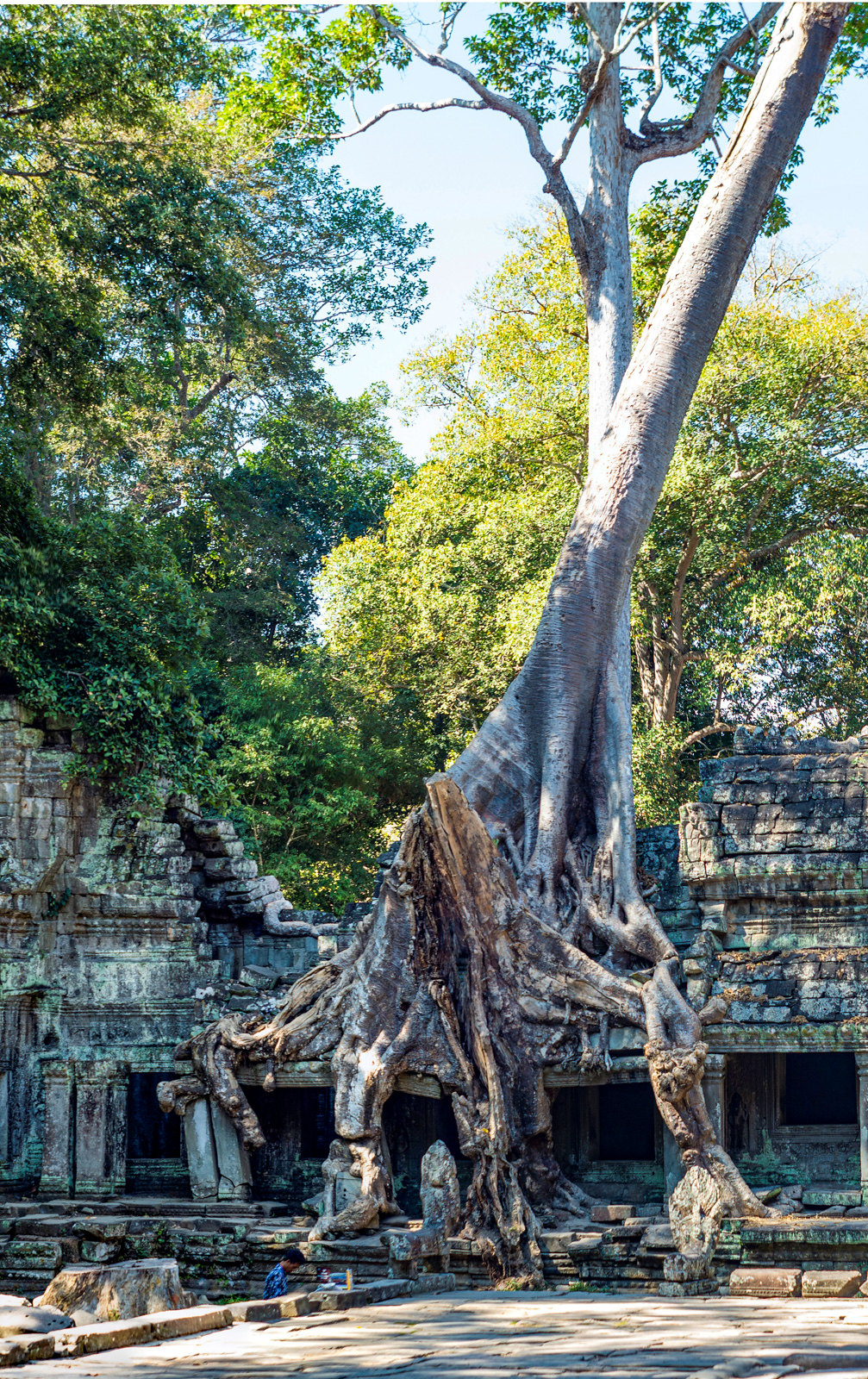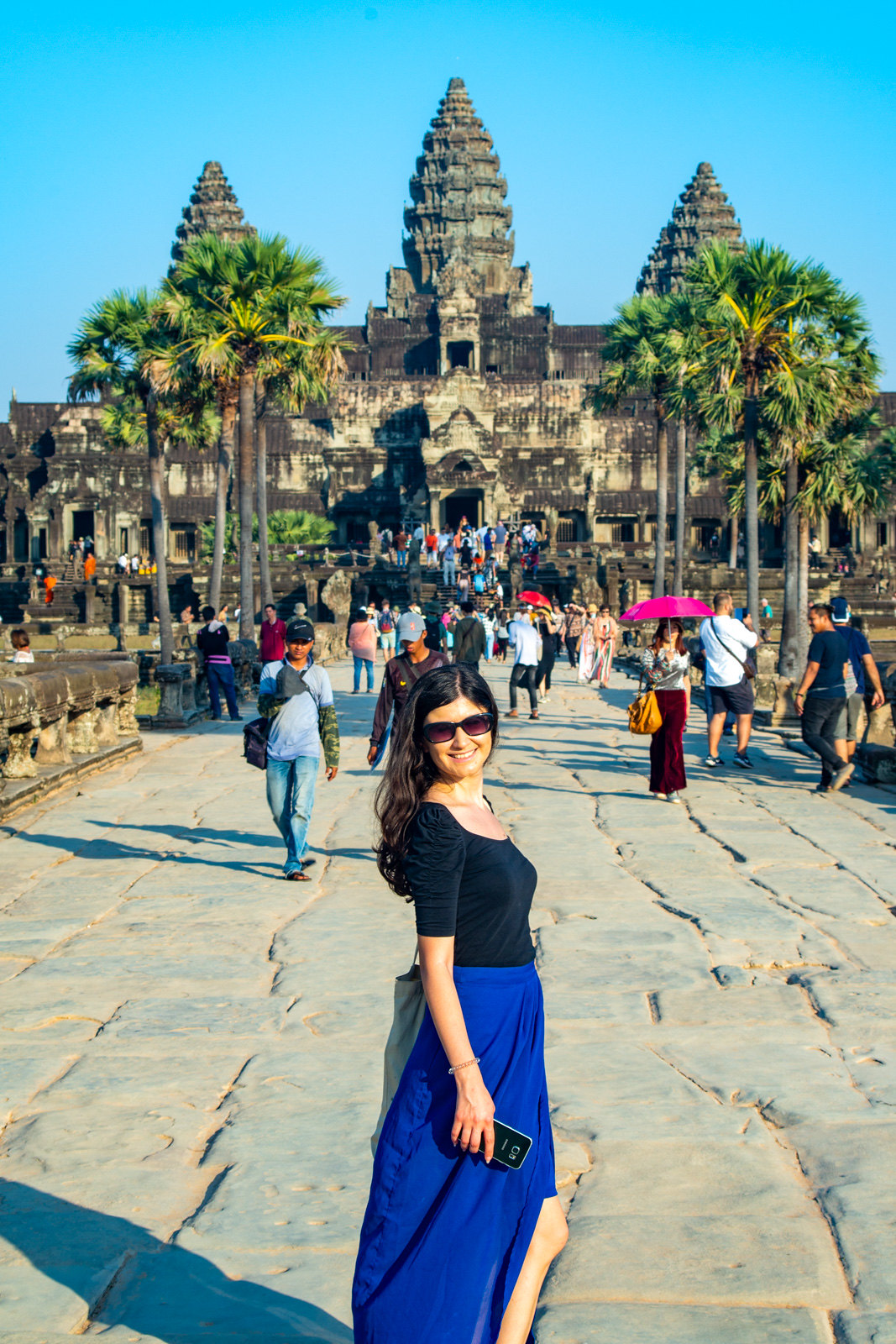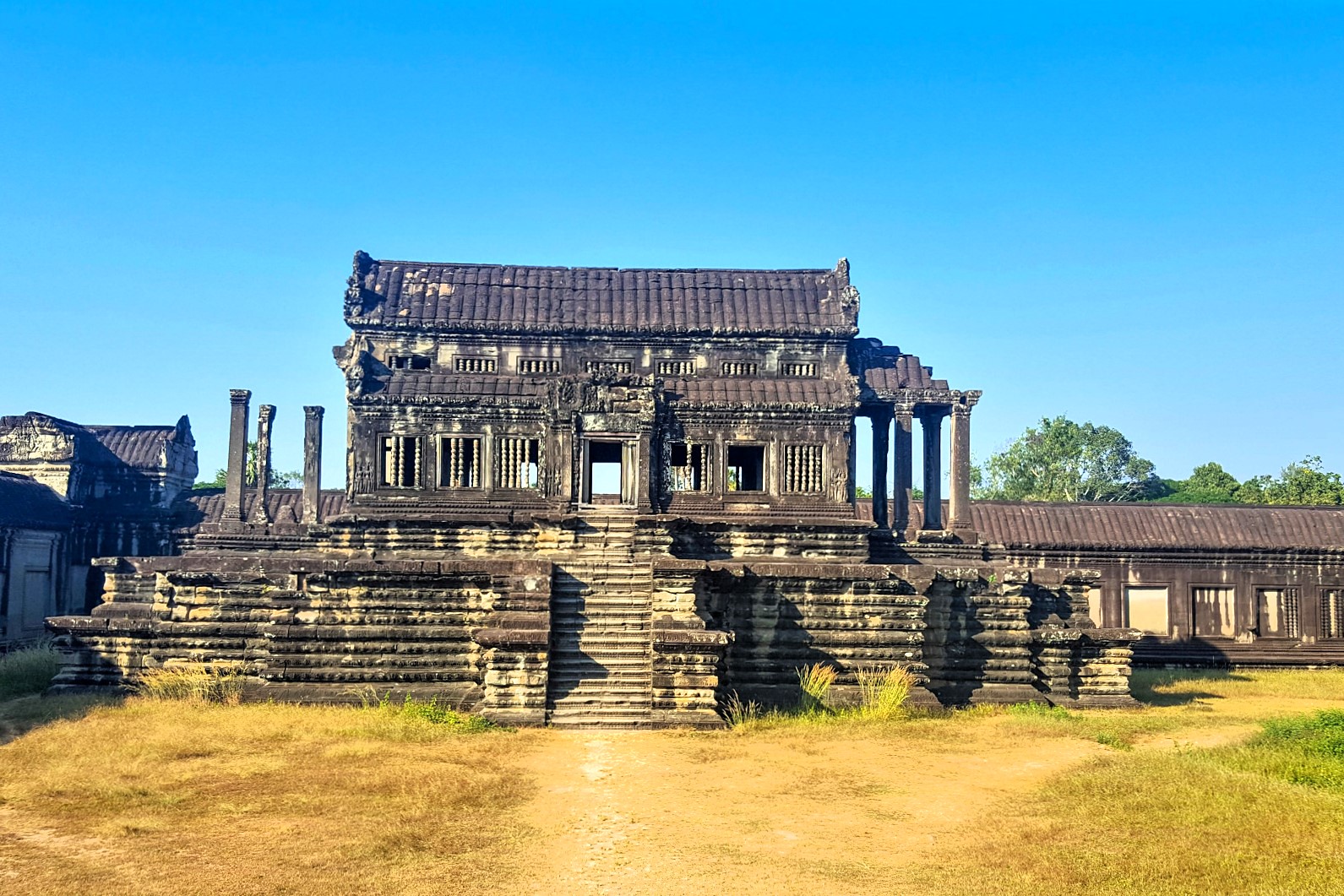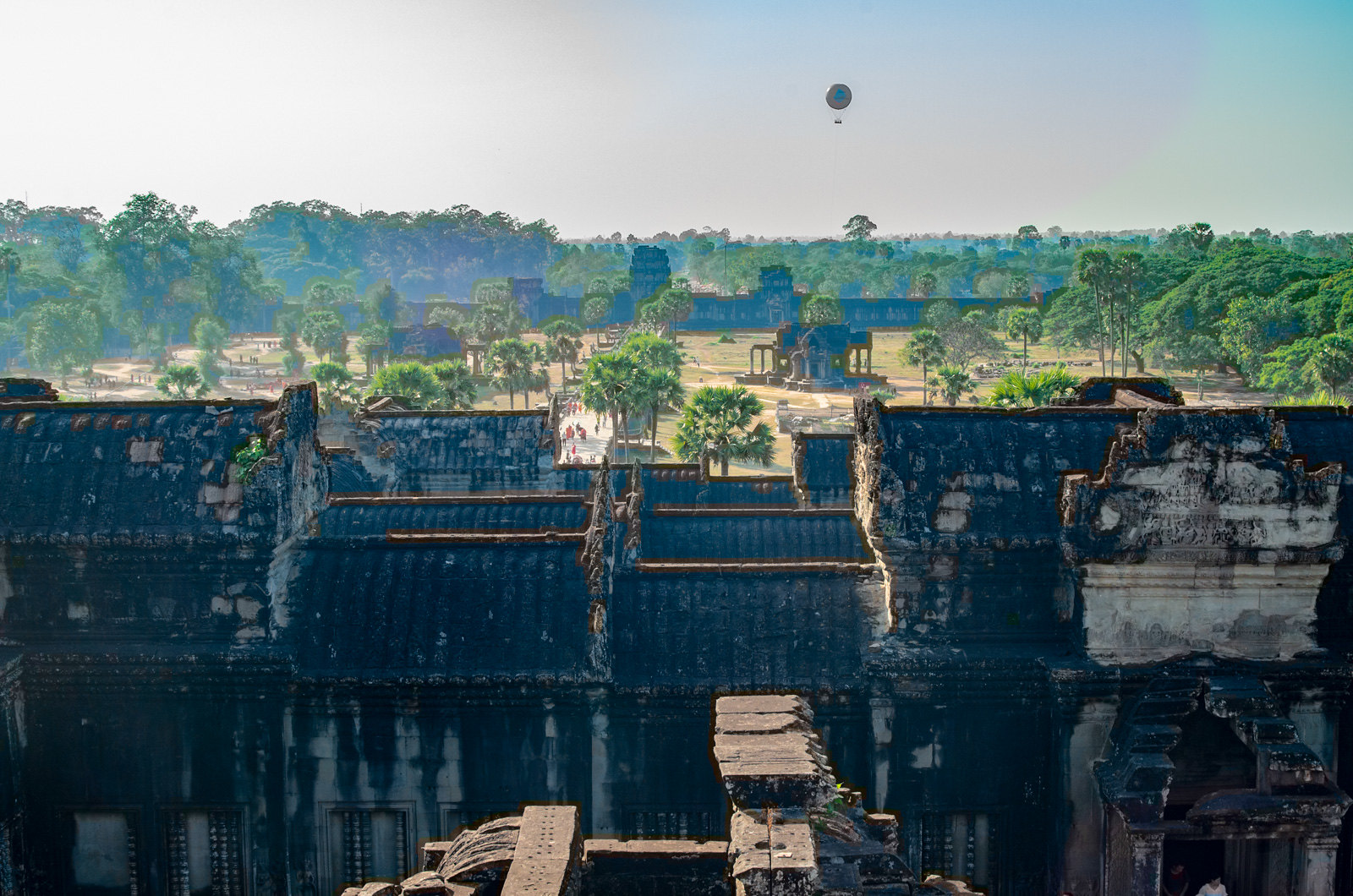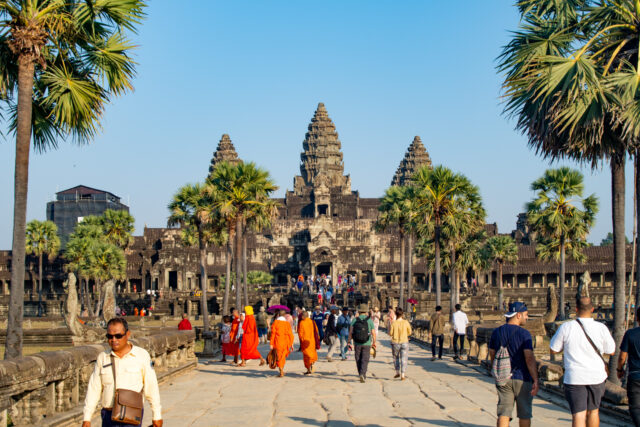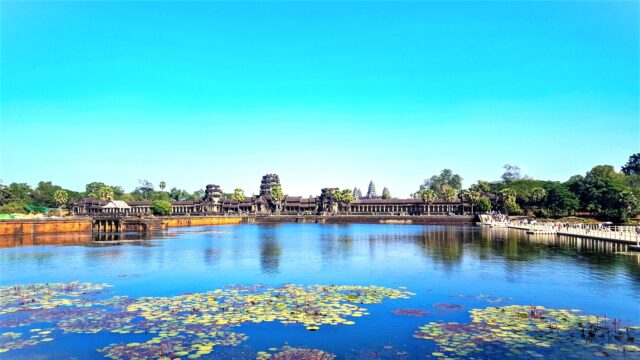Quick heads‑up, fellow travelers: Hit the Road Ket contains some affiliate links. Book through them and I earn a small commission at no extra cost to you – fueling my caffeine fix and future travels! For more details, see my Disclosures.
Visiting Angkor was my dream for a while, but I had no clue, how vast this place was. While researching I found so many different recommendations about visiting it, I was quite confused. In the end, we ended up planning 4.5 days in Siem Reap, out of which 4 were allocated to Angkor. We bought 7-day pass for this. We definitely were happy that we had enough time.
However, if you only have one day to spend at Angkor, below is the detailed itinerary, which will allow you to maximize your time and see at least the main highlights.
If you have 3 or more days in Angkor, here is the itinerary for you.
If you need the tips and information about transport, clothes, entrance passes, etc., check here.
Whichever mode of transportation you choose, you have an option of following the route set out on maps, which most tour groups follow. The so-called small circuit doesn’t include all temples you could visit in 1 day. So if you want to get most out of your day, here is the best itinerary. Keep in mind that the tuk tuk drivers will probably ask to be paid more than standard, if you want a non-standard itinerary, like this.
The temples not to be missed even if you have only a day
- (Maybe) watch sunrise at Angkor Wat – Sunrise time depending on the season
- Bayon and Baphuon (2.5 hours) – 7.30-10.00
- Preah Khan (1.5 hours) – 10.30-12.00
- Ta Prohm (2 hours) – 12.30-14.300
- Angkor Wat (2-3 hours) – 15.00-17.00
- Pre Rup (1-2 hours and watch sunset) – 17.30-sunset
If you are much faster in exploring these temples and don’t want to peek into every book and cranny, like we did, you can include other temples too – like Ta Som.
The 1-day Angkor Pass
You can buy your ticket either at the ticket office or online. If you are planning to buy at the ticket office, I strongly suggest getting the pass the previous day, as mornings can be crowded, especially for 1-day passes. Besides, there is a perk of buying your ticket the day before – you are allowed to visit the still open temples for the sunset, as they allow this with the next day’s ticket after 5pm. Alternatively, you can purchase your ticket online and directly head to Angkor with your printed ticket.
If you opt for going for a sunset visit the day before your visit, you will be choosing from among Angkor Wat, Phnom Bakheng or Pre Rup (see the information below).
Sunrise at Angkor Wat?
If you choose to go for sunrise, expect to pay about 5-10 USD over the daily price to your tuk tuk driver.
Depending on what time of the year you are visiting, sunrise is at different times. When we visited by the end of December, it was at about 6.30. So plan relevantly, if you want to catch the beautiful rays over Angkor Wat.
Most people suggest to go as early as possible to get a good spot exactly at the edge of water and not have crowds in front of you. Ask your driver, what time that would be and arrive as early, as you can.
To be honest, we are not morning people and besides, having seen all the photos of the Angkor Wat sunrise, it didn’t appeal to us much. We thought it would simply tire us without giving much benefit, so we never got there early enough for the sunrise.
We did head out before 7.30 though each day, to be as early as possible and not to lose time.
Whether you see the sunrise at Angkor Wat or not, I don’t suggest visiting this temple in the morning, directly after the sunrise crowds enter it. You better leave it for later in the day, when it becomes at least slightly less crowded.
Angkor Thom (2-3 hours)
Bayon
Yes, this is the one with faces 😀 Arrive to Bayon temple as soon as it opens at 7.30. Usually, it gets very crowded starting from 8am and absolutely so from 9am.
This temple stands exactly in the middle of Angkor Thom and was built in the 12th century. When you enter Bayon, you may not be too impressed, but the upper level is fascinating with the smiling faces carved in stone. There are 54 towers with faces here, as the 54 provinces of the Khmer empire. They are not Buddha faces, as some people think. They depict Bodhisattva Avalokitesvara. People think that this fact saved them from the crackdown of Khmer rouge on all Buddha statues.
However, do also walk around the lower level, you will find interesting bas reliefs, the galleries and some hidden spots to explore.
Bayon is also the temple, outside which you will find many monkeys. They don’t seem aggressive, but they look for food. So if you have any food on you, make sure it’s locked. Murat had nuts in the outside pocket of the backpack and the monkey jumped on it to get it. Here it is munching on the nuts he scavenged 😀
Baphuon
Next stop is Baphuon. I didn’t really expect much from this temple, but it surprised us a lot. As many temples in the area, this was originally a Hindu temple (dedicated to Shiva), which was converted to Buddhist in later years. The temple needed a thorough renovation, so in 20th century it was basically dismantled and put back together.
At the back you will find the lying Buddha carved in the stone of the main building. The Buddha is quite huge and you may not even notice it, unless you have a keen eye. In this photo the head is on the left side and it stretches all through the building.
Baphuon was very picturesque for us. We took tons of photos in it’s galleries surrounding the main buildings on all levels. They are really beautiful, and I advise you wander around and not just climb to the highest point 😊
Overall, we spent about 4.5 hours in Angkor Thom, as we added other temples too. So if you have time, check out the Terrace of the Leper Kings, Terrace of the Elephants and the Phimeanakas.
For a 1-day itinerary, you can visit only Bayon and Baphuon and spend about 2-3 hours, before heading to other temples.
Preah Khan (1.5 hours)
However little time you have, I definitely recommend visiting this temple. It is quite big and you need at least 2 hours to explore, if you are like us 😊
It has four entrances and is surrounded by the moat. It would be best to tell your driver to drop you off at the East entrance and wait for you at the West entrance, or you can make your way back, if you like and are not lazy.
This is another 12th century temple. Its name can be translated as royal sword or holy sword. It was very charming for me, it has the old trees growing through the buildings, beautiful corridors, the libraries, Garuda statues, etc.
The temple was left unrestored for a long while and its restoration works were only dedicated to preservation. This makes it even more charming and authentic. Some areas are off limits, as they are dangerous.
Interestingly, the main temple was Buddhist, while the smaller ones were dedicated to Shiva. It served not only as a temple, but also as the living royal city and as a university. Hence, there were two libraries located here. For instance, some believe this beautiful two-storey design building with columns served as a library, however no one knows for sure. There is also a beautiful Hall of Dancers.
Near the West entrance you will find trees growing from the ruins, just like at the Ta Prohm. One of the trees has the shape of an elephant trunk. There were people playing with it 😊 As you get outside the West entrance, you will find even more beautiful vision of the trees hugging the buildings.
Ta Prohm (2 hours)
Next on our itinerary is the most picturesque temple of all in my opinion – Ta Prohm. Often called the Tomb Raider temple, this is one of the three most popular, along with Angkor Wat and Bayon. It was deserted for centuries and, as a result, was taken over by trees.
Some people will suggest coming here very early, at the opening time of 7.30am. We didn’t do this, but I doubt this advice is still a way to avoid crowds. Instead, we went during lunchtime, before 13.00.
When we first arrived, at 1pm, we thought the temple was crowded, but after 14.00 or so, we understood what crowded means. It became so full of people that it was often difficult to pass. That made us realize that coming at lunchtime was a great idea. At least we could walk around and not have several dozens of tour groups blocking all views, like later on after lunchtime.
Keep in mind, that the most crowded parts of the temple are in the middle, the parts with narrow paths, where you should get lost. So if you come here at lunchtime, head to these areas first and leave exploring the outer circle, along the walls, for later.
That said, I guess no crowds would make me not love this temple. It isn’t just the one tree, you see a photo of everywhere. If you ask me, you should allocate at least 2 hours to this amazing place and find all those trees growing out of buildings, trust me they are many. You will find amazing picturesque spots, a number of trees peeking out of the buildings. It gives such a mysterious and amazing feeling. Pictures definitely don’t do it enough justice.
Angkor Wat (2-3 hours)
After Ta Prohm, you can head back to the Angkor Wat. This temple is obviously the most famous and most visited. All tourists coming to Angkor visit it. So, as a result, it’s always extremely crowded. But even more so during the sunset and sunrise times, when everyone is here trying to get that perfect photo. We tried to go in the late afternoon, when it was slightly less crowded than in the morning or sunset hours.
Allocate at least 2.5 hours here, but I would suggest more like 3+, if you want to explore less visited parts and just enjoy it. We told our driver we would be back after 2.5 hours and by the end we did feel rushed. Of course, we like to enter many different buildings and towers, where you find only a couple of people. So, if you just want to explore main areas, 2 hours may be enough.
Angkor Wat is a Hindu temple and constitutes the single largest religious monument. I don’t guess it needs much introduction, as it is on the flag of Cambodia and very well known worldwide. Most people enter from the west side, which offers nice views of the complex. You will cross the sort of bridge over the moat and end up inside.
After this you can walk around the complex or go inside. Btw, if you choose to walk around, you will find almost no people. Once inside, before going to the central areas, I suggest to see the small buildings in the courtyard. You can climb and see some of these remote parts, and again, there will be no one here, or 1-2 people wandering around, like us 😊 The below is the photo from such area, where we were the only ones.
Once in the main area, one of the most popular spots full of tour groups and tourists are the galleries, such as Battle of Lanka gallery, Battle of Gods gallery and several others. You can walk through them and marvel at the bass reliefs depicting scenes from Ramayana and other Hindu stories. Next to them, you will find smaller courtyards as well.
Btw, Angkor Wat also serves, as a working temple, which I didn’t know before going. So you will find monks praying there and conducting ceremonies.
When you get to the middle courtyard, which is located in the heart of the temple, you will see people queueing for going up the tower. I have heard that people have waited for a couple of hours for this. Not sure, if that’s the case in the mornings, but in the late afternoon (a few days before New Year), we only had to wait about 10-15 minutes. It was worth the short wait, as the views from up there were nice. Besides, you will find 4 different statues of Buddha from sitting to reclining, etc. The tower also has nice views.
Overall, don’t forget to stop and admire this magnificent place. Enjoy the moat around it, get gorgeous views and just simply get lost.
Pre Rup (1-2 hours)
This temple is somewhat different from others due to its color. It is another Hindu temple dedicated to Shiva and built at the same time, as East Mebon (in the 12th century). It is built in the shape of pyramid with, surprise surprise, very steep steps 😊 You can walk around on each level, which is a rather nice experience to look over the views and to just be alone, as most people just go up and down, without exploring any other parts.
The golden hour and sunset light at this temple is beautiful, therefore, it’s the best part of Angkor to enjoy sunset without huge crowds.
Sunset at Angkor, Phnom Bakheng or Pre Rup
You have 3 main options open for the sunset time:
- Many people watch sunset at Angkor Wat and it is beautiful, but so very crowded.
- Another most popular spot (if not THE most popular), is Phnom Bakheng. But if you decide to go there, arrive very early, preferably before 4pm to be able to be among the 300 people, who are let on the temple. (You can find out more about this temple in the 3-day itinerary).
- Another, less crowded option for the sunset (and the one I recommend) is Pre Rup.
Where to eat in the evening
I don’t suggest to eat around Angkor, due to the high prices. Bring your own snacks for the day and head to Siem Reap in the evening to find cheap and tasty food places and coffee shops. See the list here.

Hello I am Ket,
A traveler, planner, and sweet tooth behind Hit the Road Ket.
Travel isn’t just my passion – it’s a lifeline for my mental health. Having lived in three cities and explored 60 countries (and counting!), I created this blog to share my experiences, smart tips, and itinerary advice with fellow travel lovers. I’m all about making the most of limited time, finding scenic routes, and turning every trip into something memorable – coffee in hand, of course.
